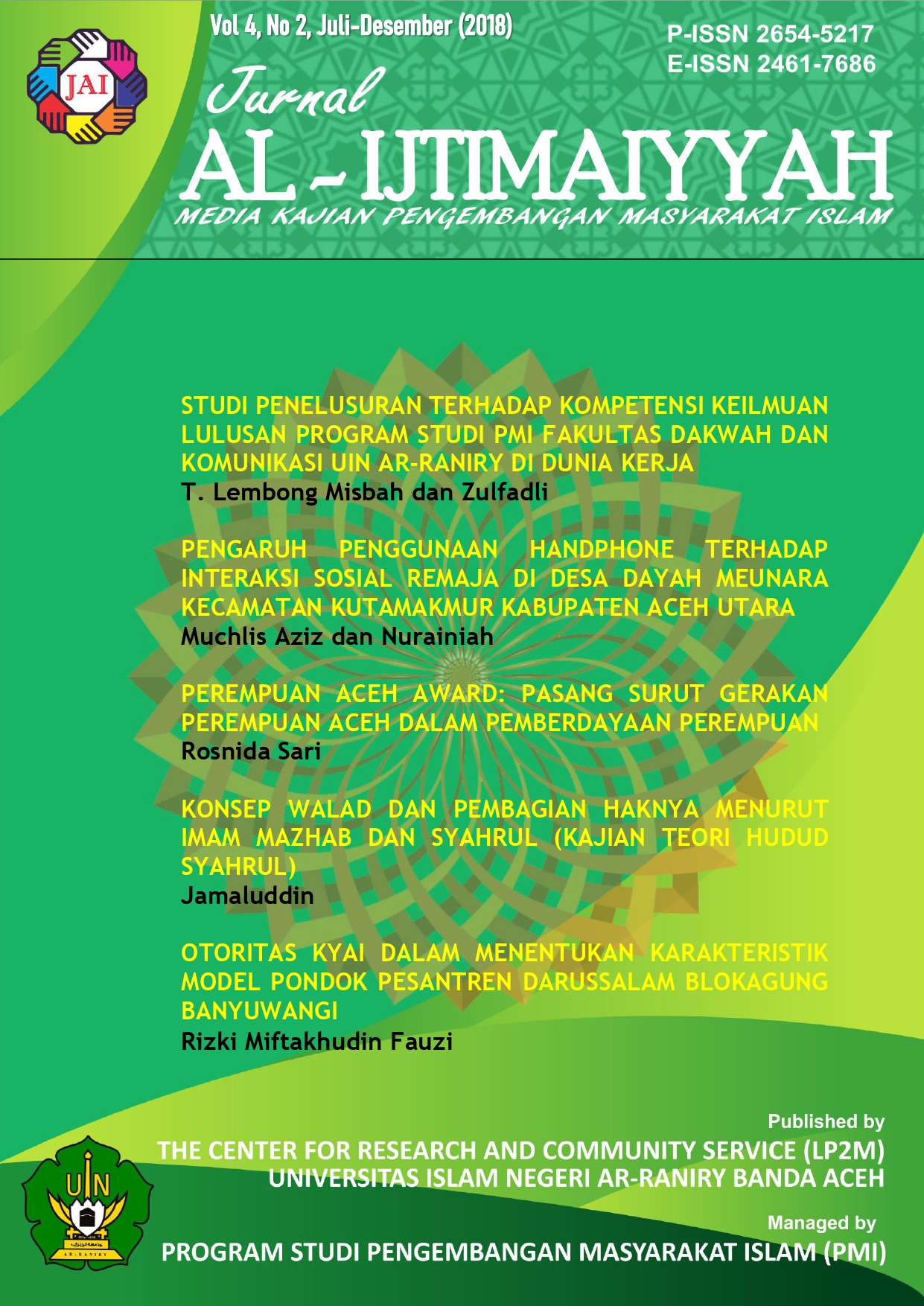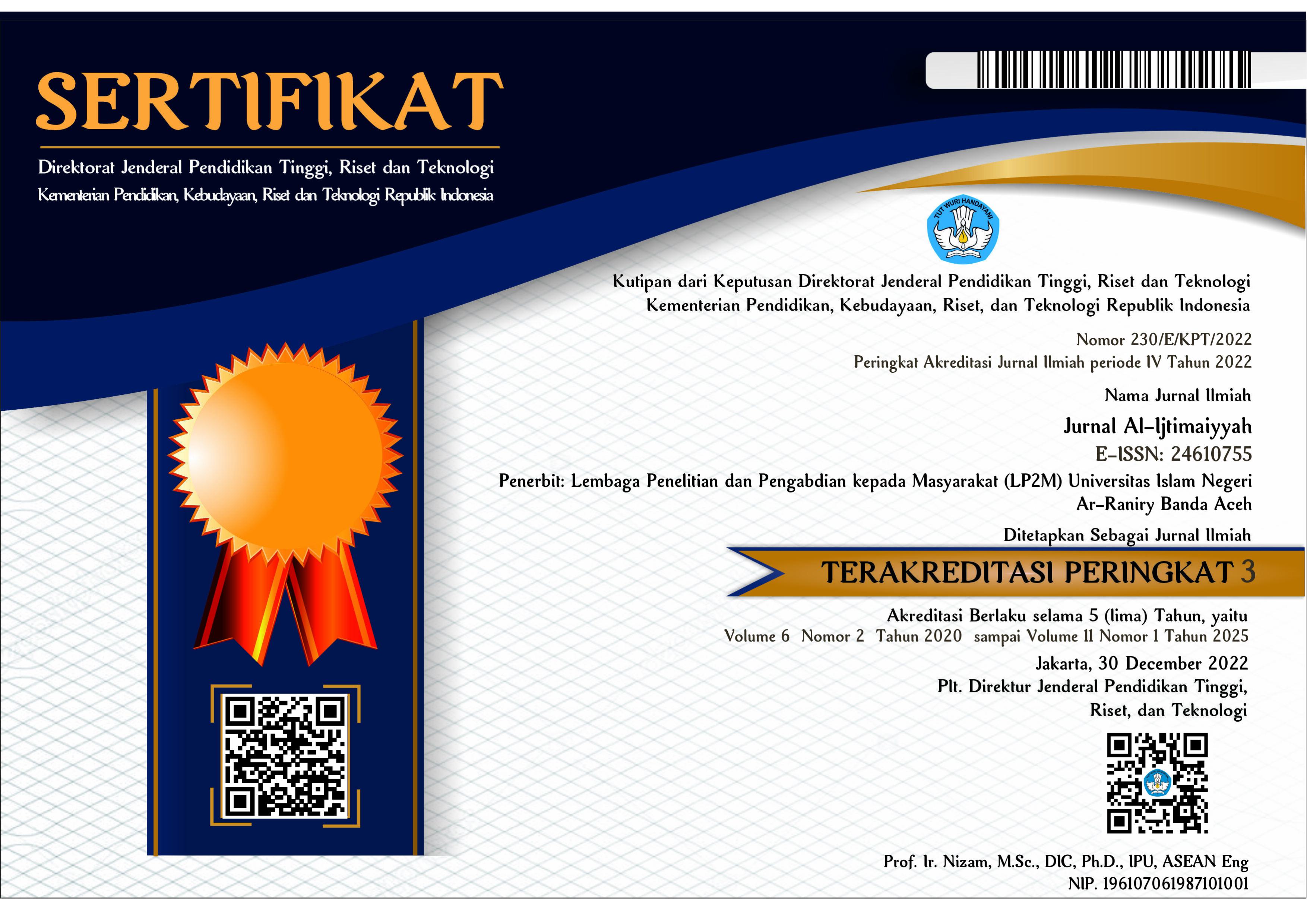KONSEP WALAD DAN PEMBAGIAN HAKNYA MENURUT IMAM MAZHAB DAN SYAHRUL (KAJIAN TEORI HUDUD SYAHRUL)
DOI:
https://doi.org/10.22373/al-ijtimaiyyah.v4i2.1313Abstract
This study raises the concept of walad and the distribution of rights in Islamic inheritance according to the hudud Syahrur theory and the ulema of the school of fiqh. Syahrur did not differentiate the meaning of the word walad in an-Nisa 'verses 11 and 12 and 176. Shahrur interpreted the word walad in an-Nisa' as a boy and girl. This opinion is clearly different from the opinion that developed among the Sunni scholars. The ulama of the school interprets the word 'Surat an-Nisa' verse 176 as a boy. This opinion has 2 reasons. First, they use the Walad lafad in a special way. The Arabs interpret lafad walad as a son only in terms of (daily habits), the second lafad walad is interpreted in a hamlu way because there are three hadiths as supporters. The three hadiths say that girls cannot spend property. Syahrur established three forms of legal boundaries in the distribution of inheritance for boys and girls. The first is the maximum portion for boys 66.6% and the minimum limit for girls is 33.3%. The second is the minimum limit that must be accepted by girls 2/3. The third is the minimum limit for girls to get half (50%) of the assets. Whereas according to the ulama the sect received by a boy is equal to two parts for a girl. This understanding is interpreted through the Bayani approach.
Keywords: Walad’s pronunciation, part of inheritance for children
Downloads
Downloads
Published
Issue
Section
License
Copyright (c) 2018 Jamaluddin

This work is licensed under a Creative Commons Attribution-ShareAlike 4.0 International License.
Authors who publish in Jurnal Al-Ijtimaiyyah agree to the following terms:
- Authors retain copyright and grant the journal right of first publication with the work simultaneously licensed Attribution-ShareAlike 4.0 International (CC BY-SA 4.0) that allows others to share the work with an acknowledgment of the work's authorship and initial publication in this journal.
- Authors are able to enter into separate, additional contractual arrangements for the non-exclusive distribution of the journal's published version of the work (e.g., post it to an institutional repository or publish it in a book), with an acknowledgment of its initial publication in this journal.
- Authors are permitted and encouraged to post their work online (e.g., in institutional repositories or on their website) prior to and during the submission process, as it can lead to productive exchanges, as well as earlier and greater citation of published work. (See The Effect of Open Acces)










